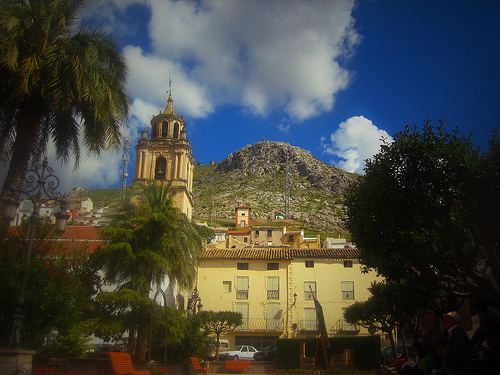Comarca Metropolitana Demonym(s) Marteño/a, tuccitano/a Elevation 753 m Local time Tuesday 2:08 AM | Judicial district Martos Time zone CET (UTC+1) Area 259.1 km² Population 24,562 (2014) | |
 | ||
Weather 6°C, Wind E at 21 km/h, 75% Humidity | ||
Martos is a city in the province of Jaén in the autonomous community of Andalusia in south-central Spain.
Contents
- Map of 23600 Martos JaC3A9n Spain
- History
- Former diocese of Tucci
- Titular see
- Economy
- Festivals
- References
Map of 23600 Martos, Ja%C3%A9n, Spain
It has a population of 24063 inhabitants, making Martos the fifth largest municipality in the province. The city is located on a western peak of the Sierra Jabalcuz mountain range. It belongs to the metropolitan Area of Jaén, of which it is considered to be the second most important city after the capital.
Its economy is based on agriculture, in particular the cultivation of the olive tree. Martos is considered to be the first producer of olive oil of the world. Also important are various industries, especially those related to the treatment of plastic.
History
The city has been linked to the Roman settlement of Colonia Augusta Gemella, and starting in the 8th century was ruled by the Moors under various Islamic states for over 500 years.
In 1225, King Ferdinand III of Castile and Leon captured the city from the Moors and incorporated it into his kingdom.
During the Middle Ages, Martos became a strategic place, and its defences were reinforced with the construction of numerous fortifications in the city.
At the end of the 19th century and beginning of the 20th, Martos underwent significant economic and urban development (reflected in the city's architecture), in large part due to the wealth derived from the industrial production of olive oil. Martos thus became one of the most prosperous cities of eastern Andalusia.
Former diocese of Tucci
Around 250 AD, a bishopric was established in present Martos under the name Tucci, on territory from the suppressed Diocese of Iliturgi. It was a suffragan of the Metropolitan Roman Catholic Archdiocese of Sevilla.
In 350, it lost territory to establish the Diocese of Cástulo (now also a titular see), which it regained at that bishopric's suppression around 400.
In 715, it was suppressed to establish the Diocese of Beaza.
Recorded bishops are
Titular see
The diocese was nominally restored as a Latin titular see in 1969 and since had the following, non-consecutive incumbents, all of the lowest (episcopal) rank :
Economy
As it has been said already, Martos possesses an immense agricultural richness thanks to the culture of the olive grove, which places the city in the summit as for production and quality of what is named a “liquid gold ". Nevertheless, in the last years, the industry has done a great act of presence in the economy of this city, especially the plastic industry, the car industry, metallurgists, the construction of roads, etc. Among all the existing factories in the city, it is necessary to emphasize the French multinational Valeo, dedicated to the production of projectors and lighting of vehicles, on which many other factories depend.
Festivals
Among the numerous festivals carried out in the city it is necessary to highlight:
